
Soft, quick to cook, and easy to keep on hand, poha is one of those ingredients that seems simple until you start using it. A bag of flattened rice flakes in the cupboard can turn into breakfast in minutes, and they’re just as good at soaking up spices as they are at carrying fresh flavors.
Poha isn’t limited to morning meals either. With a little imagination it can be stirred into savory snacks, filling bowls, or even sweet dishes. From classic recipes to new ideas, it’s a versatile staple that fits into everyday cooking without much effort.
What Exactly Is Poha?
Poha is simply rice that’s been parboiled, rolled flat, and dried into thin flakes. You might also hear it called flattened rice or beaten rice. It’s light, quick to prepare, and as pantry-friendly as oats or couscous. Once soaked, it turns soft and fluffy—perfect for easy meals.
Naturally gluten-free and low in fat, poha offers a satisfying bite, especially when paired with fresh herbs, veggies, or warm spices.
Quick Facts About Poha (Flattened Rice)
- What it is: Parboiled rice that has been flattened into light, dry flakes; also called beaten rice or aval
- Flavor & texture: Mild and neutral in taste; soft and fluffy when rinsed, crisp if dry-roasted or fried
- Best in: Kanda Poha, Batata Poha, Indori Poha, upma-style stir-fries, chivda snack mix
- Varieties: Thin, medium, thick; available in white or red poha (red is slightly nuttier and higher in fiber)
- Prep basics: Rinse briefly and drain; let rest 5–10 minutes to soften. Avoid soaking to prevent mushiness
- Nutrition: Gluten-free; good source of carbs, iron, and some fiber (especially in red poha)
- Storage: Store in an airtight container in a cool, dry place; best used within 3–6 months
How Is Poha Made?
The process starts with parboiling rice, then drying it completely under sun light or mechanically. Once dried, the grains are passed through heavy rollers that flatten them into soft flakes of various thicknesses.
These flakes don’t need traditional boiling. A quick rinse or soak is enough to bring them back to life—making poha one of the fastest whole-grain options in the kitchen.
Forms You’ll Find It In
Poha isn’t one-size-fits-all. It comes in several forms, and each one brings its own texture and cooking style to the table:
-
Thick Poha
These sturdy flakes hold their shape well after soaking. Perfect for hearty dishes that need a bit of chew — like spiced rice bowls or grain-based patties. -
Medium Poha
The most versatile option. It softens quickly but doesn’t fall apart, making it great for both savory meals and sweet treats. -
Thin Poha (a.k.a. Nylon Poha)
Ultra-light and delicate, this version is often used dry — in snack mixes or roasted for crisp toppings. Not ideal for soaking. -
Red or Brown Poha
Made from whole-grain rice, it has a nuttier flavor and more fiber. A great option if you're leaning toward a less processed version.
Packaged versions may also come pre-mixed with spices, dried herbs, or nuts — convenient but check labels if you want to control the ingredients.
What Does It Taste Like?
On its own, poha has a mild, almost neutral flavor — think of it as the rice equivalent of a blank canvas. But that’s exactly what makes it so versatile. Once soaked, it becomes soft and slightly chewy, ready to take on whatever flavors you throw its way.
Whether you stir in fresh herbs, drizzle it with lemon juice, or spice it up with bold seasonings, poha doesn’t fight back — it absorbs and complements beautifully. It’s not about the taste it brings… it’s about the taste it builds.
Culinary Uses Around the World
While poha may go by different names, flattened rice shows up in kitchens across the globe in surprising ways:
-
Quick Breakfast Bowls
Soaked poha can be tossed with yogurt, fruits, nuts, or even savory toppings for a nourishing, no-cook breakfast. -
Stuffed into Rolls or Wraps
Its soft texture makes it an ideal filler for wraps or rice paper rolls — add a sauce, and it blends right in. -
Used in Snack Mixes
In many regions, thin poha is dry-roasted and combined with spices, seeds, or roasted legumes to create light, crunchy snack blends. -
Formed into Patties or Croquettes
Mix poha with mashed vegetables or beans, and you’ve got a solid base for pan-fried cakes or oven-baked bites. -
Folded into Desserts
Believe it or not, soaked poha can be sweetened with honey or syrup and turned into simple puddings or chilled parfaits.
It may not be a household name everywhere yet — but in kitchens that crave speed, simplicity, and adaptability, poha is starting to earn its place.
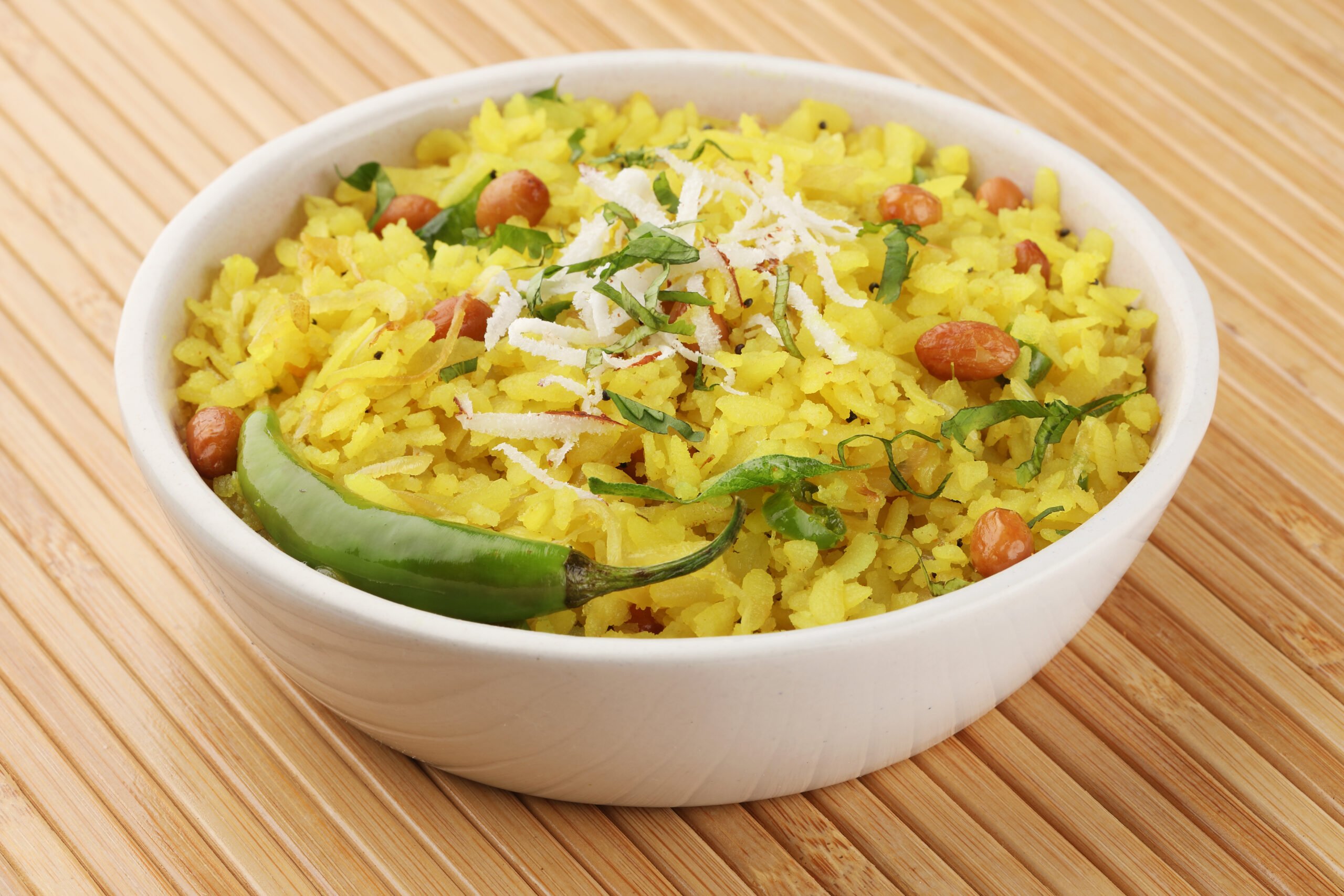
How to Soak and Cook It Right
Getting poha’s texture just right is all about how you treat it before the pan. The good news? It’s super simple — no boiling, no long wait.
Here’s how to prep it like a pro:
-
For thick or medium poha:
Rinse it gently in a colander under cold water for 30–60 seconds. Let it sit for 5–10 minutes until soft but not mushy. Give it a light squeeze to remove excess water before cooking. -
For thin poha (nylon):
No soaking needed! Just dry-roast or toss it directly into snack mixes or spice blends. -
Want extra flavor?
Soak poha in vegetable broth, spiced water, or coconut milk instead of plain water to infuse it with subtle taste before cooking.
Once softened, poha only needs a few minutes in the pan — just enough to warm through and absorb your seasonings.
Creative Ways to Use Poha Beyond Traditional Recipes
Poha is more than a base for breakfast — it’s a quiet multitasker that plays well in all kinds of dishes. Here are some fun, out-of-the-box ways to give it new life:
-
Poha Energy Bites
Mix softened poha with nut butter, chopped dates, seeds, and a touch of honey. Roll into bite-sized snacks that are perfect for post-workout or on-the-go. -
Grain-Free “Granola”
Dry-roast thin poha with coconut flakes, cinnamon, and crushed nuts. Sweeten lightly with maple syrup for a crunchy topping over yogurt or fruit. -
Poha-Stuffed Bell Peppers
Use seasoned poha as a gluten-free stuffing mixed with herbs, cheese, or lentils — then bake until golden and warm. -
Breakfast Jars
Layer soaked poha with fruit, yogurt, and a drizzle of almond butter for a no-cook meal prep option. -
Crispy Poha Toppings
Roast thin poha with smoked paprika or garlic powder for a quick, crunchy salad or soup topping.
Poha vs. Other Grains & Flakes
Poha might seem simple, but when stacked against other pantry staples, it holds its own — especially when speed and versatility are priorities.
-
Poha Vs. Regular Rice
Regular rice needs time — soaking, boiling, and resting. Poha? Just a rinse and rest. It’s faster, lighter, and doesn’t need heat to become meal ready. Great for quick fixes or when the stove’s already busy. -
Poha Vs. Oats
Both are gluten-free and easy to digest, but poha stays fluffier when soaked. It doesn’t get gummy like oats often do — which makes it a better base for savory bowls, quick stir-fries, or crisp toppings. -
Poha Vs. Quinoa or Couscous
While quinoa and couscous offer higher protein, they require actual cooking. Poha skips the heat, making it perfect for hot days, travel-friendly snacks, or fast meal prep. -
Poha Vs. Millet or Barley Flakes
These whole grain flakes take longer to soften and often have a stronger, nuttier flavor. Poha is milder — which means it takes on flavors beautifully, whether sweet, spicy, or tangy.
Flavor Pairings
Poha has a mild personality — and that’s a good thing. It soaks up whatever you give it, making it a perfect partner in flavor crime. Here’s what brings it to life:
-
Bright & Tangy:
Lemon juice, yogurt, tamarind, or even pomegranate seeds add that much-needed zing. -
Bold & Spicy:
Green chilies, black pepper, mustard seeds, or curry leaves work beautifully if you like a bit of heat. -
Fresh & Herby:
Coriander, mint, dill, or chives add a clean, green lift to both savory and sweet versions. -
Nutty & Crunchy:
A sprinkle of roasted peanuts, cashews, or toasted coconut gives it texture and balance. -
Sweet & Fruity:
Banana, mango, dates, or even a touch of cinnamon can turn poha into a dessert-style bowl or energy snack.
In other words, poha is like that friend who fits in everywhere — from brunch tables to lunchboxes to snack trays.
Poha Substitutes
Ran out of poha? Here are some pantry-friendly swaps that come close, depending on the dish:
-
Other rice flakes:
Brown or red rice flakes are the closest match. They’re used the same way — rinse and rest — but they have a slightly nuttier flavor and firmer bite. -
Rolled oats:
For sweet bowls or soft-texture recipes, rolled oats work well. Just note they become creamy when soaked, so not ideal for dry or stir-fried dishes. -
Quinoa or couscous:
These are good for grain bowls or stuffings, though they require cooking. Their texture is fluffy, but the prep isn’t as quick. -
Millet flakes:
These resemble poha in flake form and can be used similarly, but they’re harder to find and often take longer to soften.
Avoid using cooked rice or dense grains like steel-cut oats — they change the texture too much and don’t absorb flavor the way poha does.
How to Store It Right
Poha doesn’t ask for much — but a little care keeps it fresh and ready when you need it.
-
Keep it airtight:
Transfer poha to an airtight container once opened. This keeps out moisture and prevents it from going stale or soggy. -
Store in a cool, dry place:
A pantry or cupboard works fine. Just keep it away from humidity, as poha absorbs moisture easily and can lose its texture. -
Avoid the fridge:
Uncooked poha doesn’t belong in the fridge. The cool air can introduce moisture, which may lead to clumping or spoilage over time. -
Check for bugs:
Like many dry grains and flakes, poha can attract pantry pests. Use it within a few months and always check before using, especially if stored in bulk.
With basic pantry storage, poha stays good for up to 6–8 months — ready to transform into a meal at a moment’s notice.
Nutritional Value (Per Cup, Uncooked)
Poha might look like simple flakes, but it delivers steady energy and pairs well with nutrient-rich ingredients. Here's a general breakdown for 1 cup (approx. 80g) of uncooked poha:
-
Calories: ~280 kcal
-
Carbohydrates: ~60–62 g
-
Protein: ~5–6 g
-
Fat: ~0.5–1 g
-
Fiber: ~1.5 g
-
Iron: ~1.5 mg
-
Calcium: ~10–15 mg
These values may vary slightly depending on the type and brand.
Health Benefits of Poha
Poha isn't just quick and convenient — it may also offer several health perks, especially when paired with nutritious ingredients. Here’s what it may do for your body:
-
May support steady energy levels
Thanks to its complex carbs, poha can release energy gradually, keeping you full longer without sudden spikes and crashes (Source). -
May aid digestion
It's light on the stomach and easy to digest, which is why it’s often a go-to during recovery meals or when your appetite is low (Source). -
May be gentle on gluten-sensitive diets
Naturally gluten-free, poha is a smart swap for those avoiding wheat-based grains — just make sure it's processed in a gluten-free facility if sensitivity is severe (Source). -
May help improve iron intake
Some varieties of poha, especially traditional or locally milled ones, retain more iron — and pairing it with lemon juice may help boost absorption (Source). -
May support weight-conscious eating
Low in fat and adaptable for veggie-heavy recipes, poha can be a satisfying yet low-calorie choice when prepared mindfully (Source).
Potential Health Risks
Poha is generally safe for most people, but like any ingredient, it’s all about how you use it — and how much.
-
May be low in protein and fiber
On its own, poha isn’t particularly rich in protein or fiber. Relying on it too often without adding veggies, nuts, or legumes may leave your meals less balanced (Source). -
Some commercial varieties may be heavily processed
Highly polished poha can lose much of its natural nutrients. Look for less processed or thicker flakes if you want to retain more of its original value (Source). -
May cause blood sugar spikes if eaten alone
Since it’s mostly carbs, eating poha without healthy fats or protein may lead to quick digestion and a short-lived feeling of fullness — something to watch for if you’re managing blood sugar levels (Source).
Final Thoughts
Poha isn’t flashy, but that’s its strength. It’s quick to prep, easy on the stomach, and incredibly adaptable — whether you're tossing it into a spicy stir-fry, building a sweet breakfast bowl, or using it as a gentle start to your day.
Its neutral flavor means it can be dressed up or down, making it a go-to for busy mornings, light lunches, or snack-time cravings. And with just a little creativity, poha moves beyond tradition and into bold, modern meals.
So if you're looking for something that’s simple, satisfying, and surprisingly flexible — keep poha in your pantry. You’ll find yourself reaching for it more often than you think.
FAQs
Is poha gluten-free?
Yes, poha is naturally gluten-free, making it a great option for those with gluten sensitivity. Just check the label for any cross-contamination warnings.
Can poha be eaten without cooking?
Absolutely. Thick poha only needs a quick soak to soften and is often used in dishes like chivda or soaked breakfast bowls.
Is poha good for weight loss?
It can be. It’s low in fat and calories, and when paired with veggies or lean protein, it becomes a light but satisfying meal.
How long should I soak poha?
Usually 3 to 5 minutes. Just rinse it, let it sit, and drain once soft. Be careful not to over-soak — it turns mushy fast.
Can diabetics eat poha?
Yes, especially when balanced with fiber-rich ingredients and healthy fats. Plain poha alone may digest quickly, so pairing it smartly is key.
Learn More About Poha (Flattened Rice)
Wikipedia — Flattened Rice
This article on flattened rice highlights its quick-cooking nature, its use as a staple across South and Southeast Asia, and its adaptability in both savory and sweet recipes. It also touches on its preparation process, regional names, texture varieties, and the convenience it offers in traditional and modern dishes.
One Life to Eat — Flattened Rice Breakfast
This article highlights poha as a quick, nutritious breakfast made from soaked flattened rice, seasoned with spices like mustard seeds and turmeric, and often paired with vegetables for a filling start to the day.


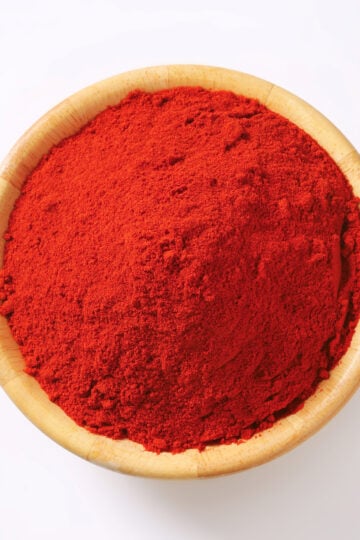
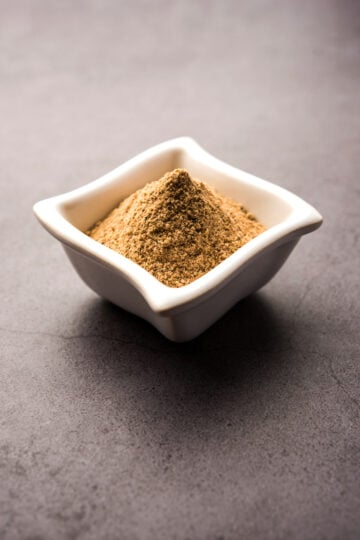
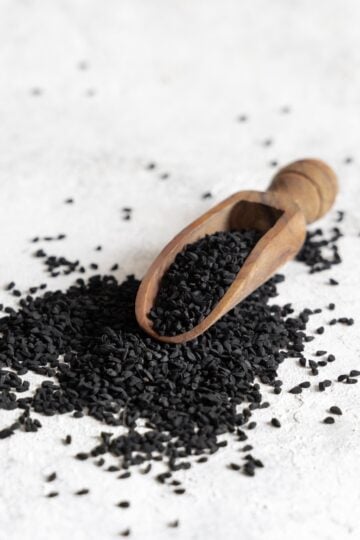
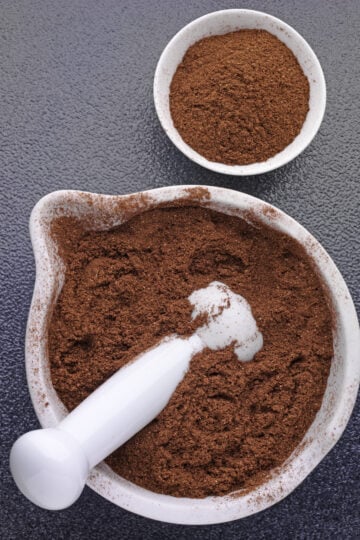
Have a question or something to share? Leave a comment below!